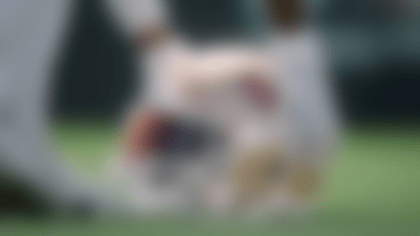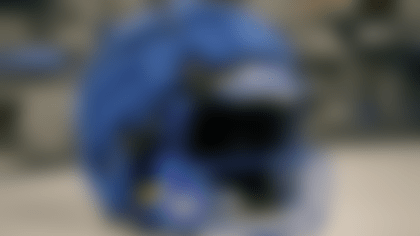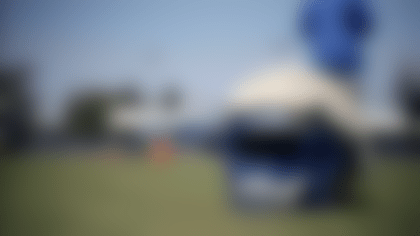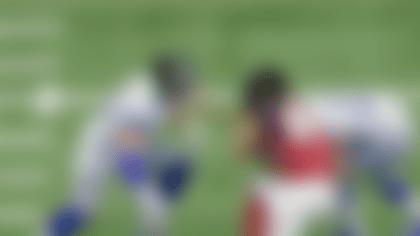Innovation Through Collaboration
The automobile industry, sports leagues and the U.S. military all benefit from Dr. Jeff Crandall's expertise on the biomechanics of injuries.
He's the Director of The Center for Applied Biomechanics at The University of Virginia.
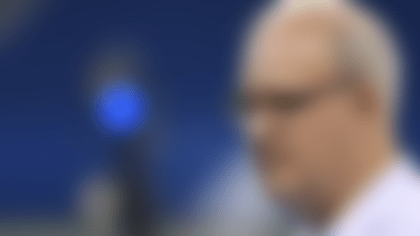
In October, Dr. Crandall's research work took him to an empty Lucas Oil Stadium in Indianapolis to study game-day player impacts with crash-test dummies.

In November, his work took him to a first-of-its-kind educational forum in a Washington, D.C. hotel to share what he has learned with hundreds of other experts and innovators.
On both occasions, he was helping to lead an effort to apply some of the best minds in biomechanics and medicine to understand more about how head injuries happen on the football field, and use what's learned to catalyze the design of better protective equipment in the future.
Many of these experts work in automobile safety and their work to improve the safety of protective equipment in football will be modeled on proven injury prevention techniques from the car industry.
The Engineering Roadmap
Over the next two to four years, the NFL aims to convene academics with entrepreneurs to stimulate innovation of player-ready safety equipment.
It's part of what the NFL calls the Engineering Roadmap.
The League has pledged $60 million over the next five years to improve the understanding of football biomechanics and to create incentives for small businesses, entrepreneurs, innovators and helmet manufacturers to develop new protective equipment.
That's where Dr. Crandall comes in.
He chairs the NFL's Head, Neck and Spine Engineering Subcommittee and will be a principal guide through the execution of the Engineering Roadmap.
"The Engineering Roadmap is a comprehensive and dedicated plan to try and bring knowledge, research and tools together to develop and improve protective equipment for the head," Dr. Crandall said.
The Engineering Roadmap will be managed by Football Research, Inc., a non-profit corporation formed and financially supported by the NFL.
Let Science Lead The Way
"We brought together the leading researchers and biomechanics, and medicine," Dr. Crandall said. "We've coupled them with innovators, designers that manufacture helmets, manufacture sensors, manufacture protective equipment so we can consolidate all the information and have transformational change in short order."
The approach: let science lead the way.
"We're trying to elevate everyone's knowledge at the beginning, so that as we move forward, there is a strong foundation from which to build," he said. "In three to five years, what we hope to see is that we have safer helmets on the field."
"The better the research, the better the end product," he said.
Crash Test Dummies On A Football Field
Dr. Crandall was one of three dozen experts who gathered in Indianapolis in October.
Their specialties ranged from forensic engineering to impact sensor technology, data acquisition, biomechanics and crash reconstruction.
Together on the field at Lucas Oil Stadium in sneakers and slacks, they put sensor-enabled crash test dummies through football-like hits and filming the contact with high resolution motion cameras.
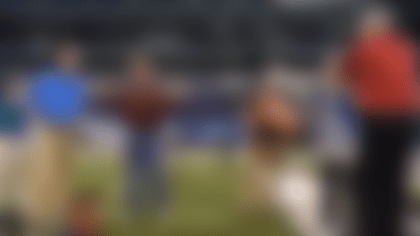
The cameras filmed the action from dozens of angles around the field. These re-creations perform an essential purpose.
"If we can understand the player's motion when they sustain an injury," he said in October, "then what we can do is go in a laboratory and create a test environment."
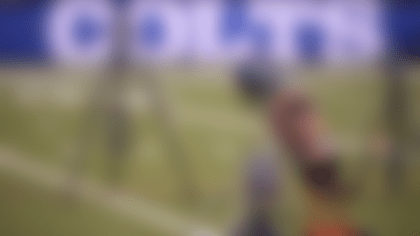
"Once we have a model that can represent motion of the head and brain under the most common concussion scenarios," he said, "what we can do then is take those models and design a helmet model computationally that would prevent injury—and once we design it computationally, then we can design it physically and get that helmet on the field."
Dr. Crandall and his colleagues have big plans for this work.
"Given that players experience different types of impacts, we would like to lead to the development of a better helmet for each specific type of position, for each type of player, each type of position," he said.

"Our common goal," he said, "is to try and understand the game so that we can make it safer for players."
Let New Science Lead to Better Equipment
A few weeks later, Dr. Crandall joined several hundred other experts from academics and industry in Washington for "The HeadHealthTECH Symposium: Fundamental Biomechanics of Concussion in the NFL."

"The primary purpose of the Engineering Roadmap is to stimulate innovation in a very open and transparent way to improve the safety of the game," said Dr. Kristy Arbogast in D.C. She is the Co-Scientific Director and Director of Engineering for the Center for Injury Research and Prevention at Children's Hospital of Philadelphia and a Research Professor of Pediatrics at the University of Pennsylvania. Dr. Arbogast also advises the NFL Players Association.
"In other areas of medical research, it's collaborative science that leads to breakthroughs," said Dr. Arbogast. "The reason I am here, and what I'm thrilled to be part of, is this collaborative effort."
"This body of work will be really fundamental in understanding, at a very detailed mechanical level, the scenarios in which injuries are happening," said Dr. Arbogast. "And that, I think, will allow us to stimulate innovation in the right way, because you don't just want to say to these innovators, 'Oh go out and build a new helmet.'"
"With the Engineering Roadmap research plan, we're going to have the data to really direct the development of these innovations in a way that's evidence-based and real," said Dr. Arbogast.

The Symposium in Washington is a key part of the Engineering Roadmap. It's the first in a series of educational efforts and events to share the most up-to-date biomechanical and biomedical information.
It's also another step to educate and create incentives for those in the marketplace to design and manufacture protective equipment that perform better than current models.
"We're right at the beginning of a program that's intended to last between three and five years," said Jeff Miller in D.C. He's the NFL's Executive Vice President of Player Health and Safety. "The goal is that in three years or so, we'll have seen advances in current helmets. And in five years, we'll be very sophisticated in understanding exactly the sorts of hits that particular players take, particular positions take, what the head feels when it's hit in a particular way on a football field."
An Opportunity to Learn and Connect
"If you look at concussion, it's obviously based on diagnosis of injury," said Dr. Crandall. "There's huge variability from individual to individual."
He says treatment is equally as complicated with such a large spectrum of tolerance to injury among athletes.
"What we're trying to do is take advances in material science, advances in computational modeling and how you design pieces of equipment—and apply those to the study of protective equipment," he said.
The Symposium brought together world-class biomechanical and biomedical engineering experts who educated hundreds of innovators—including inventors, equipment manufacturers, venture capital representatives and engineering students—on the latest knowledge, tools and design.

Inspiring Innovators and Entrepreneurs
Ryan Sullivan, President of Xenith helmet company, attended the D.C. Symposium.
"I have three young boys, and there are millions of young athletes, both here in the United States as well as around the world," said Sullivan. "The opportunity to help make athletics, especially the game of football, safer for our athletes is a very noble cause."
"This forum provided the opportunity to interact with folks that we would hope will lead to collaboration and innovation down the line," Sullivan said. "There's a lot of people looking at different materials that could be applicable to our product and our technology."
Sarah Gholston is Vice President of Merchandising at Russell Athletic, which manufactures shoulder pads.
At the Symposium, she noted Dr. Crandall's research showing 43 percent of reported NFL concussions during the 2015 season are from helmet-to-body impacts—rules changes related to helmet-to-helmet hits have changed the ways players tackle and the resulting distribution of impact sources. Gholston suggested that kind of information can help inform her company's designs.
"We can go back and look at the materials that we're using in our exoskeletons and our foams," she said. "I think they gave us some things to think about in terms of how we select our materials as we move forward."
"The more we learn, the more we want to continue to push the envelope on materials and design," she said.
Gholston also spoke about speeding up the time it takes to bring a product to market. "I think the more connectivity you have between the research, the innovation, and the manufacturing, you can really shorten those lead times," she said. "And then you can also make sure what you're bringing to market is going to do the job that you were hoping it could do."
The Future of Research
Erin Sanchez is a graduate student and research assistant at UVA's Center for Applied Biomechanics. She was one of 20 students who was awarded a grant to attend the Symposium.
"My little brother plays football right now," said Sanchez. "I thought that this would be a great opportunity, not only to learn from some of the best people in the field and experts in the field but also to contribute, to talk to other people during lunch, at meetings, and just to get a wider perspective than what I've had, which has been very biomechanics-based at our lab."
"The most interesting conversation I've had today has been with someone in the Material Science side," she said. "It was really cool listening to him talk about the different innovative foams that they're developing, not just for football helmets but for different applications, and how it could be used."
Bridging the Gap Between Experts and Innovators
Dr. Richard Kent is a consultant to the NFL who designed the program for the Symposium.
He is Professor of Mechanical and Aerospace Engineering, Biomedical Engineering, and Emergency Medicine at the University of Virginia as well as Deputy Director of UVA's Center for Applied Biomechanics.
Dr. Kent spoke about the need to close the gap between innovators creating products and experts doing the leading research on concussion prevention. The Symposium, he said, was designed to bridge that gap.
"We want to try to bring those folks together, help inform the innovators about what tools might be available to them, how they might be able to better assess their products, better design their products," he said. "Then also we want to bring the researchers to people that are actually bringing products to fruition, because a lot of times a researcher will answer a question, but won't know how to apply it to the real world."
"I think there's that person working in his garage who's got this great concept or a great idea and that may indeed have potential," he said. "But that person may not have the resources, may not have the knowledge-base or the experience to make that product."
"It takes a special person to be able to kind of take something all the way to market," he said. "And that person is not necessarily going to know the most cutting edge injury biomechanics research and the latest study on concussion mitigation. So there again we're trying to fuse those two groups of people."
Incentives For Innovation
Innovators and entrepreneurs were also issued a call to action: the first in a series of competitions called the HeadHealthTECH Challenges.
These grant-based innovation TECH Challenges are intended to deepen understanding of and advance solutions in the areas like head protection, materials science, and head kinematics. The TECH Challenges will help further the goals of the Engineering Roadmap by creating incentives for helmet companies, manufacturers, small businesses, entrepreneurs, universities and others.
The NFL and Football Research, Inc. created the TECH Challenges, which will be operated and managed by Duke University's Clinical and Translational Science Institute (Duke CTSI). TECH Challenge I focuses on the next generation of helmet technologies and surfaces these helmets impact.
Dr. Barry Myers is Director of Innovation at Duke CTSI, Coulter Program Director, and a Duke Professor of Biomedical Engineering. He also advises the NFL Players Association.
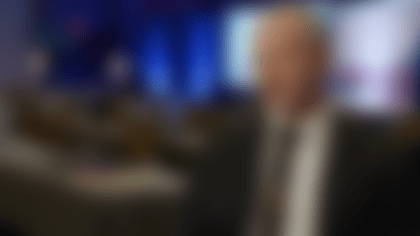
"If you're an innovator, we want you to apply," he said. "We want you to reach out. We want to hear what your product is, we want to hear what your vision is, and we want to know in what ways we can help you succeed. For some folks, that will be some money, and that money will be to give you the data, the piece of evidence, the prototype that allows you to go out and talk to other people, venture capitalists, angel investors, existing big companies so that they will see your idea, see the inherent value of it and acquire it and move it from where you have it all the way to market."
He and his colleagues will work closely with grant recipients who will retain ownership over their ideas at all times.
The goal is to reward people "for new, interesting, dynamic ideas that could potentially disrupt current marketplaces," said the NFL's Jeff Miller.
Making A Difference
The experts walked away from the Symposium optimistic about potential progress under the Engineering Roadmap.
"I'm convinced that in the five years that we're going to do this effort, we will have visible material wins," said Dr. Myers.
"I believe that the NFL, in collaboration with the Players Association, is one of the few entities that actually has a chance to make a difference in this area," said Dr. Arbogast.

"Five years from now…I presume that helmets are going to look different than they look today," said Jeff Miller. "I think that what goes into those helmets will be different, the materials may be different. But what will be common among whatever those helmets look like is that they were infused with data, they were based on good science, they were based on a very regimented approach."
"We're going to share information," Miller said. "We're going to share our learnings very transparently as we invest in the research so that really smart, interesting, innovative people out there can make the changes that are necessary to make the sport safer."





